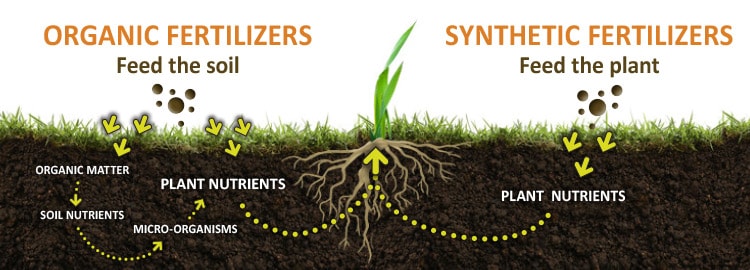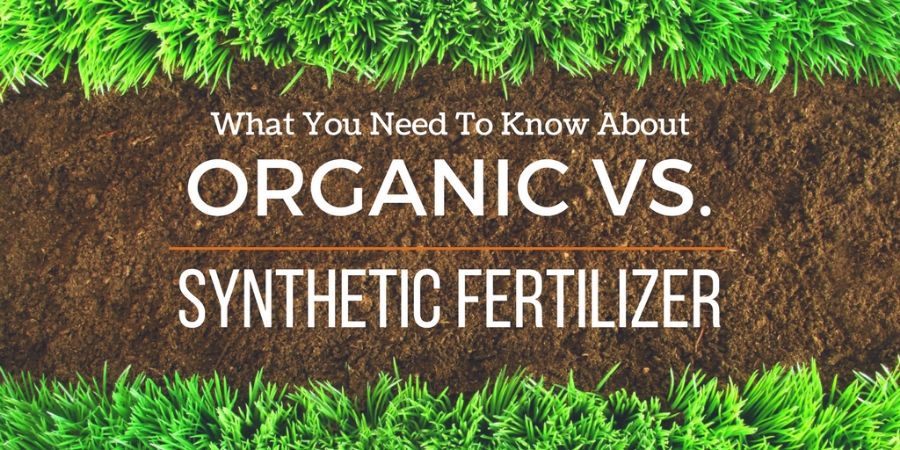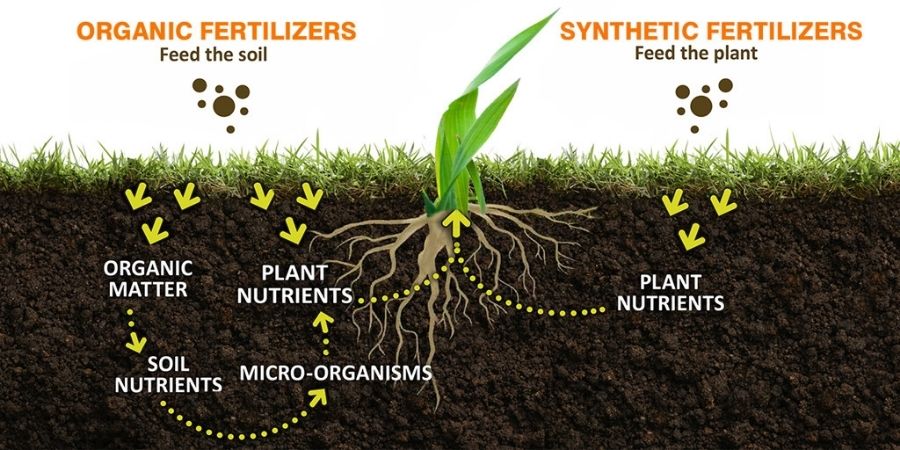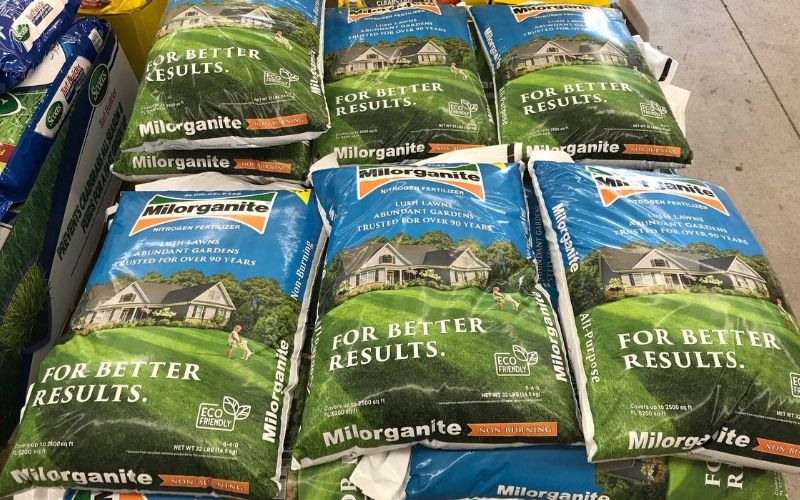What is the Difference between Fertilizer Derived from Organic and Synthetic Sources?
Fertilizers come from many sources. Synthetically derived fertilizers are manufactured from minerals, gasses from the air and inorganic waste materials. Fertilizers derived from organic sources obtain their nutrients from natural sources such as microbes, organic waste, and other similar materials.

What is Organically Derived Fertilizer?
Fertilizers derived from organic sources provide benefits to both plants and soil and when used properly generally won’t burn or damage plants. Organically derived fertilizers stimulate beneficial soil microorganisms and improve the structure of the soil. Soil microbes play a key role in converting organic fertilizers into soluble nutrients that can be absorbed by plants at a rate they can use. Organically derived fertilizers often provide the secondary and micronutrients plants need, usually absent in synthetic fertilizers.
Organically derived fertilizers typically have a lower NPK analysis (nitrogen, phosphorus, potassium) than synthetics fertilizers, but they feed plants for a much longer period of time. As a result, the impact of organic fertilizers on lawn and plants is usually more subtle. It may take a little longer to see results, but the reward is a lawn that stays greener longer.
What is Synthetically Derived Fertilizer?
Synthetic fertilizers are best known for being fast-acting and for coming in a variety of forms such as liquid, pellet, granule, and spike. Synthetic fertilizers are water-soluble and can be taken up by plants almost immediately. While this provides a quick-hit of nutrients and rapid greening, the color won’t last as long as when organically derived fertilizers are used. Consumers must reapply synthetic fertilizers regularly to keep the results from fading.
Synthetic fertilizers give plants a quick boost but do little to stimulate soil life, improve soil texture, or improve your soil's long-term fertility. They’re highly water-soluble and can leach into waterways. The quick results of synthetic fertilizers can come at a cost; apply too much and it may burn your lawn and plants.
Comparison of Organic (natural) vs. Synthetic (chemical) Fertilizers
| Quality | Organic (natural) | Synthetic (chemical) |
|---|---|---|
| Purchasing Convenience |
|
|
| Ease of Application |
|
|
| Nutrients |
|
|
| Nutrient Release Rate |
|
|
| Impact on Soil |
|
|
| Plant Safety |
|
|
| Environmental Safety |
|
|
Milorganite® has some of the best qualities of both types of fertilizer. It’s a convenient, pelletized fertilizer derived from organic materials, which helps keep the soil fertile and conditioned to retain water. It's nutrient analysis (N-P-K) is consistent and it contains non-staining iron. It’s derived from dead microbes, so it won’t burn lawns or plants. It’s also cost-effective, easy to apply, and readily available in convenient, large bags for homeowners.








